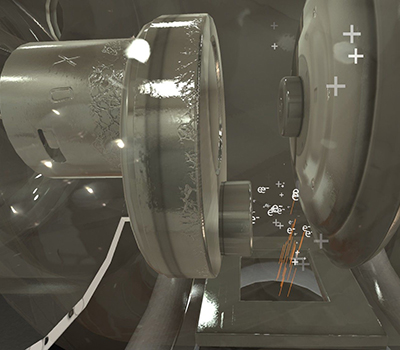Using Unity Web and our own frameworks, we’ve created many easily accessible 3D models to aid students in their studies across BCIT. The applications use simple mouse controls to pan and zoom the models and to click and drag parts away to see what’s underneath. UI toggles let users explore specific parts of the 3D models.
Two BCIT schools have extensively integrated these 3D applications: the School of Health Sciences (SoHS) and School of Transportation (SoT).
Unity Web Aorta and Great Vessels
This model shows several key parts of the human body in relation to the skeleton, which helps students better understand anatomy in relation to what they see on MRI scans. Students can zoom, pan and rotate around each model, and can separate out body parts to get a better look at them and view further inside the body.



Unity Web Brain Anatomy
This model is integrated in multiple SoHS programs, especially in Medical Radiography and Diagnostic Medical Sonography. It lets students view the brain’s anatomy and all the veins and arteries connected to it. Students can view specific anatomy, veins and arteries by dragging them out and zooming in on them. Moreover, students can make specific parts transparent for better visibility and a more detailed view.



Unity Web Carotid Artery
This model is used extensively across the SoHS, especially in the Diagnostic Medical Sonography program. It allows students to pan around a model of a human, with layers showing different anatomical systems. The model includes a manipulatable ultrasound transducer to display ultrasound images across different parts of the carotid artery.



Unity Web Transmission
This Unity Web transmission application is an essential part of the School of Transportation’s automotive service educational program (ASEP). Learners can use this application to disassemble a transmission by using the mouse pointer to drag away the individual components. They can view the transmission module in normal mode and transparent mode. Transparent mode allows them to see through the transmission and select specific parts to view while the transmission is still intact.



Unity VR Railway
In 2020, 965 rail accidents were reported to the Transport Safety Board of Canada (TSB), including 82 involving dangerous goods. This BCIT standalone VR application simulates an accident scene involving a railway train that contains UN 1017 transport goods (chlorine).
The purpose of this VR application is to increase railway knowledge to help future workers respond appropriately to disasters. The next iteration of this application will simulate how the emergency medical responder in the area will respond to this kind of incident.



Unity VR Be the Beam
Be the beam is a guided tour experience that shrinks the user down and places them inside complicated x-ray machinery. The goal of this tour is to educate students on the physics of how x-rays are produced by allowing them to witness the creation of x-rays in slow motion, right in front of their eyes. Although the project is slated to be completed this year, it has already received national recognition, with team members winning a 2019 SIM Innovator Award for Educational Innovation.



Unity Image Slider
Image Slider is a 3D image-viewing application that makes the correlation between diagnostic images and the human body easier to understand. It can be difficult for new learners to make sense of all the information presented in a single diagnostic image, and this is where the Image Slider shines. This program loads a set of sequential images that the student can scroll through while also seeing a 3D model of the human body and the position and relationship of the scan to the body.


